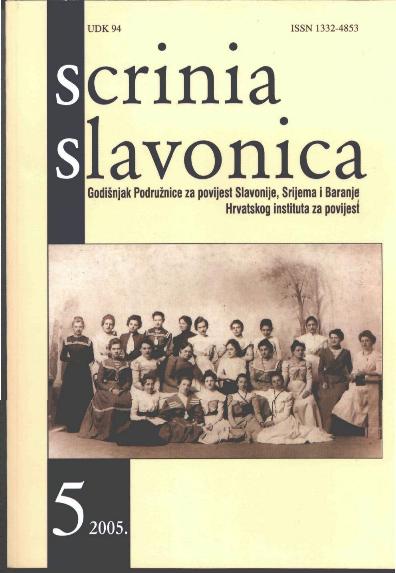

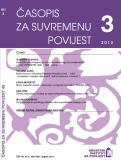
Keywords: Elections for the Constituent Assembly 1945; Yugoslav Army; Department for the protection of the people; Communist repression; Slavonia; Donji Andrijevci
The elections for the Constituent Assembly in the fall of 1945 should have been decisive for the future of democracy and the state system of the post-war Yugoslavia. The events in Donji Andrijevci District near Slavonski Brod in early November 1945 when the members of the 12th Brigade of the Yugoslav Army Third Division arrested, took away, interrogated, tortured, killed and then threw the bodies of twenty “undesirable” persons, including three women, into the river Sava, most clearly depict complex and repressive atmosphere in which the elections occurred. In addition, the pre-election events in Donji Andrijevci District are the model example of the post-war Yugoslav communist authorities’ efforts, from the lowest to the highest rank, to conceal or to show in different light the repression and the undoubted crimes enforced against real or presumed adversaries.
More...Keywords: Independent State of Croatia; WWII; German Ethnic Group; Volksdeutschers
The history of the German Ethnic Group in the Independent State of Croatia has not been a matter of serious research. This is why the author decided to compose a short survey of the Volksgruppes’ history. It is impossible to provide a detailed account of the Volksgruppes’ history in such a short article; so he decided to focus only on some features and to indicate the existence of numerous related topics and literature that contain valuable data.
More...![Zdenko Samaržija: Review of the Book ’Историја апотекарства на тлу данашње Војводине’ [History of Pharmacy in Today’s Vojvodina] by Ilija Savkov, Novi Sad 2014](/api/image/getissuecoverimage?id=picture_2015_30223.jpg)
![Ivan Roth, Javni spomenici sv. Ivana Nepomuka u istočnoj Slavoniji [Public Monuments to Saint John of Nepomuk in Eastern Slavonia] (Slavonski Brod: Podružnica za povijest Slavonije, Srijema i Baranje, 2017)](/api/image/getissuecoverimage?id=picture_2017_36439.jpg)
Keywords: -
Summary of the book in English (Ivan Roth, Javni spomenici sv. Ivana Nepomuka u istočnoj Slavoniji [Public Monuments to Saint John of Nepomuk in Eastern Slavonia] (Slavonski Brod: Podružnica za povijest Slavonije, Srijema i Baranje, 2017))
More...Keywords: Medieval church history; Hungarian-papal relations; papal chaplain and subdeacon; papal delegate; papal representatives; legate; judge delegate; nuncio
The present paper gives a short summary about the course of life of Egidius, a papal chaplain and subdeacon, who spent ca. three years in the Medieval Kingdom of Hungary in the late 1220’s as a judge delegate. The investigation focuses not on the litigations handled by the papal chaplain, but on one particular task of his, the establishment of the bishopric of Syrmia (Srem) and in connection with that on one main question: what kind of authority Egidius received from Pope Gregory IX for the planned measure. While analysing certain historical situations it is of great importance to establish whether a papal envoy was entrusted as a legate with full power or if he had to fulfil his obligation as a nuncio, with limited authorization. In the Hungarian historiography Egidius is handled traditionally as a legate, but his entire mission in Hungary seems to be of a more complex nature, therefore the question itself requires a new analysis.
More...Keywords: epoca bronzului; cultura Belegiš; bazinul vestic al Moravei; practice funerare; incinerare;
Cultura Belegiš are o istorie a cercetării lungă de peste un secol pe teritoriul Serbiei. Imaginea de ansamblu a comunităților din cultura Belegiš se bazează pe necropolele explorate, în timp ce informațiile cu privire la așezările omenești sunt încă incomplete. Nu există date despre extinderea spre sud a culturii Belegiš. Se poate presupune că extinderea spre sud, de-a lungul văii Moravei, a fost obstrucționată de către comunitățile din cultura Paraćin. Pe de altă parte, anumite reflectări ale evenimentele de la trecerea de la epoca de mijloc la cea de final a Epocii Bronzului pot fi identificate pe valea Drinei și în necropolele tumulare din bazinul occidental al Moravei, în apropiere de Čačak. Reflectarea relațiilor dintre cele două comunități coexistând în acest spațiu se poate recunoaște în practicile funerare. O importanță deosebită are materialul descoperit în necropola tumulară Mojsinje de lângă Čačak, unde în unele morminte cu decedați incinerați s-au descoperit cupe în stil Belegiš. În ciuda faptului că în regiune nu au fost scoase la lumină situri de așezări contemporane, se poate concluziona că respectivele comunități interacționau, făcând schimburi de idei, printre acestea numărându-se și elemente de înțelegere a vieții de apoi și, în consecință, concepte funerare specifice.
More...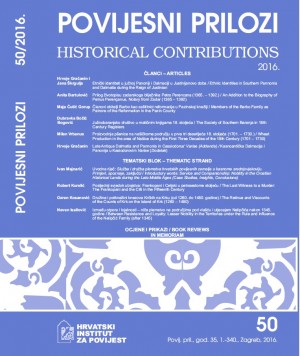
Keywords: History of Education; Croatian education system; Croatian Institute of History;
Education of young generations as a basis for the future and a precondition for modernization and progress in all spheres of social life has always been an important subject matter for the intellectuals, especially since the Enlightenment, and for the highest administrative structures of European monarchies. In Croatia, it is still an urgent issue. Although the history of education and school system is not a novelty in Croatian historiography on the regional, local, or national level, it is one of those research topics that abound in under-researched or only partially researched issues and aspects. A comprehensive, synthetic overview of the history of school system and education in Croatia is also missing, at least one that would be written in accordance with modern methodological approaches. Today, interdisciplinary and comparative approaches to the research topic, the use of relevant and international scholarly literature, and the innovative models of interpretation make it possible to reach fresh and interesting insights linked to the history of Croatian school system and offer a new interpretation of the previous research results.
More...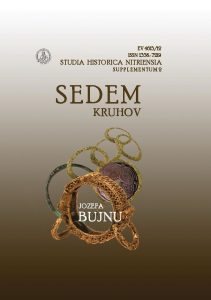
Keywords: female costume; fibulae with enamel; Middle La Tène; Late La Tène; southern Carpathian Basin; identity; workshops;
Bronzové spony zdobené rôzne tvarovanými priehlbinami vyplnenými farebným emailom, ktoré sa nedávno našli v južnej časti Karpatskej kotliny, dopĺňajú predchádzajúce poznatky získané pri skúmaní tejto významnej súčasti ženského kroja strednej a neskorej doby laténskej. Stredolaténske tvary sú charakteristické obdĺžnikovou platničkou na konci pätky, ktorá má priehlbiny rôznych tvarov. Tie sú základom pre identifikáciu typov, ktoré sa objavujú v špecifických oblastiach a pravdepodobne označujú miesto ich pôvodu. Na základe početných nálezov, ktoré sú v Karpatskej kotline široko rozšírené, možno predpokladať, že sú dôležitou súčasťou kroja strednej doby laténskej, najmä v juhovýchodnej a východnej časti Karpatskej kotliny. Na druhej strane, neskoro latén-ske spony typu Gomolava majú zložitejšiu formu a v súčasnosti sú známe len z lokalít nachádzajúcich sa v južnej časti Karpatskej kotliny a s jednou výnimkou sú pripisované Skordiskom. Bronzové spony zdobené farebným emailom, ako aj bronzové opasky s obdĺžnikovými a lýrovito tvarovanými článkami, rovnako bohato zdobené emailom, tvorili dôležitý prvok vizuálnej identity žien, ktoré nosili takto poznateľné súčasti kroja.
More...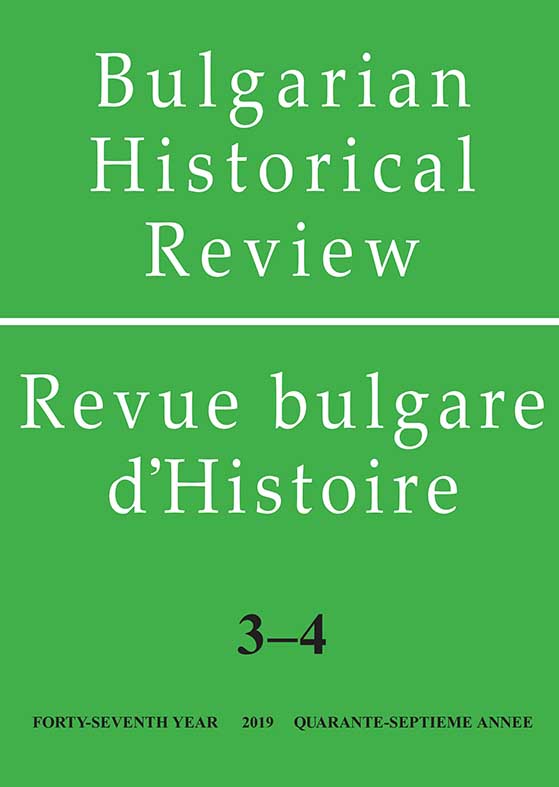
Keywords: Dubrovnik (Ragusa); Balkan Peninsula; Bulgarian lands; Ragusan consuls and judges; Ragusans traders;
The issues related to the status quo of the Ragusan Consuls, fulfilling their obligations in the region of the Balkan Peninsula and in particular – in the Bulgarian lands, are of special research interest. The reason for this is that the activity of these employees actually regulated the relations between the Ragusans traders within the territories where they had direct economic interests. Our study is focused on this range of problems, and is based mainly on written evidence from the 1380s and 1390s. The historical sources outline the authorities but also the obligations of the Ragusan consuls and judges, appointed by the Republic of Dubrovnik in the region of South-East Europe. Specifically in the Balkans, the Ragusan Consulate originally appeared in the territory of Serbia and Bosnia, where the Adriatic servants came into view first. This is chronologically related to the second half of the 13th century. Nearly a century later, the Grand Council (Veliko Viječe) of the Adriatic Republic issued a document dated on 17 December 1387. With this written source the work of the Ragusan Consulate in the Balkans and in particular – in the Bulgarian lands, was officially regulated and confirmed.
More...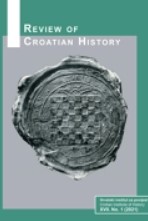
Keywords: Franjo Tuđman; peaceful reintegration; Hrvatsko Podunavlje (Croatian Danube Region); UNTAES; USA;
The role Franjo Tuđman and the Croatian government played in the process of peaceful reintegration of Croatian Danube region Hrvatsko Podunavlje (the Croatian Danube region) and in the establishment of the country’s full sovereignty is presented and analyzed, on the basis of documentary evidence, in this work. Also contained in this work are explanations and analyses related to the main objectives of the Republic of Croatia’s policies in the period from the end of 1995 to 1998. The influence of the USA and the international community on the process of resolving the conflict in the former Yugoslavia and their relationship with Franjo Tuđman is also presented. In this context this work gives an overview of the most relevant circumstances that led to the political agreement on peaceful reintegration of Hrvatsko Podunavlje and the two-year long implementation of the process.
More...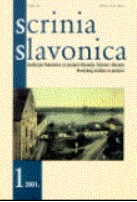
Keywords: Ilok manor; Syrmia County; absolutism; 18th century;
This paper analyses the relation between the newly established Syrmia County and the central state administration in the context of the absolutist court policy. The Habsburg Monarchy as a typical composite monarchy of the modern period pursued the policy of strengthening the power of the central state institutions which is in historiography mainly referred to as absolutism. Through this policy it developed relations with particular state formations and institutions, which can be discussed as the relation between the centre and the periphery. This policy in the Kingdom of Hungary-Croatia, a peripheral region of the Habsburg Monarchy, was expressed through numerous attempts to reduce the impact and the power of autonomous state institutions. In this sense it is necessary to conduct a historiographic valorisation of the process of the establishment of Ilok Manor and Syrmia County. Ilok Manor was established in the late 17th century in the circumstances of the exhausting war against the Ottoman Empire and as such it was an example of manorial arbitrariness and manorial weakness at the same time. By selling the manor and granting the family Odescalchi extensive powers, Leopold I, in the manner of an absolutist ruler, completely neglected the requirements of the Croatian strata and at the same time renounced considerable prerogatives of kingship in favour of the new owner of the manor. This confrontation proved to be an issue almost half a century later during the establishment of Syrmia County. The newly established Syrmia County with its organisational structure and financial system was an expression of the absolutist policy of Leopold’s granddaughter Maria Theresa. In order to fulfil its role in full, the County had, apart from the organisational structure, to resolve the issue of considerable manorial prerogatives and particularities. Accordingly, a long-lasting conflict between the county and the manorial representatives arose, the county people being intent on reducing the influence of the seigniors and their administrators. In conclusion, the analysis has, with reference to this, shown that one of the significant roles of the newly established counties, thus also of Syrmia County, was the implementation of absolutist directives of the Habsburg policy and the reduction of the autonomy of manorial prerogatives.
More...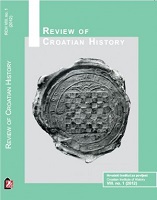
Keywords: estate; late Middle Ages; Otok; topography; Vérvár; Vukovo County;
The paper explains the distribution, based on sources and historiographical works, of settlements on the Vérvár and Otok estate in the Vukovo County in Hungarian-Croatian Kingdom in the Late Middle Ages. The central part of the paper is the analysis of medieval documents with lists of settlements from 1437, 1446 and 1476. A brief overview of the ownership of the estate was made and the issue of the Selna estate becoming property of the Otok estate was presented. According to the lists of settlements and the years stated in them, geographical maps of the estate were made.
More...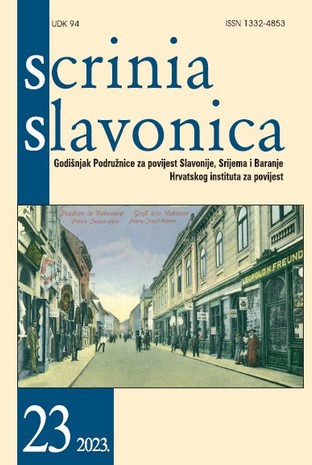
Keywords: travelogues; Low Countries; Baranya; Slavonia; Syrmia; sixteenth century; seventeenth century;
On the basis of five representative travel accounts by travellers from the Low Countries (Ogier Gisleen van Busbeke, Karel Rym, Lambert Wyts, Levinus Rym, Carel Quina), an attempt is made to form a picture of the wealth of information that can be extracted from this type of narrative source. In the past, when studying Slavonia, Baranya and Syrmia, it was often decided not to use travel accounts, or only to use them as a supplement in historical research. The argument often put forward is that travel reports are based on possible sensational, strategic and well thought-out descriptions which are not always completely true, but are in line with what was customary for this type of sources. In particular, sources made by travellers from the Low Countries who travelled through Baranya, Slavonia and Syrmia are often ignored in such studies. The most obvious reason is of course lack of knowledge of the Dutch language and the feeling that this Western European region was too far removed from this region in South-Eastern Europe to make a useful contribution to the historiographical framework. Nothing could be farther from the truth. The analysis has clearly shown that there is much to be gleaned from the sources about various aspects of daily life. Although in some cases it is not really clear where the line between truth and nonsense lies, the travel accounts are not only useful to learn something about toponymy or fortresses and Ottoman presence in this region that covers part of present-day Croatia and Serbia. The travellers who chose the diplomatic route via the Danube for diplomatic reasons are clearly distinguished from the one traveller in the selection who chose the same route for curious and religious reasons. Whereas the diplomatic envoys mainly talk about the physical landscape, it is clear that Quina was particularly attentive to the people and nature in his surroundings. The latter’s travel report also distinguished itself from the rest by the way it was written. Where he went into detail, the others remained somewhat superficial. It is clear that the underlying reason for the journey had a clear impact on what was described in the travel accounts. The five travel accounts are only a few of the sources that exist concerning the connection between the Low Countries and this region of Europe. The increasing presence of the Low Countries in the Ottoman Empire also meant that more ambassadors, consuls, envoys and confidants set out on the road to Constantinople and left written sources behind. Here it is important to mention, among others, the many existing letters of Cornelis Haga, Coenraad van Heemskerck and many other Dutch representatives in the Ottoman Empire since the beginning of the seventeenth century. There are some other sources that have not received enough attention until now, but they could also tell us something about what people from such a distant region had to say about Baranya, Slavonia and Syrmia. In a broader analysis, in which literary works and other types of sources can be combined, it would be possible to find out to what extent the Low Countries differ from others in their description. This research has mainly shown that, from the strategic reasons of the diplomatic missions, one wanted to emphasise the conditions in which these Christians lived, while from the other source one could find out what occupied the local inhabitants in their daily lives. It is precisely because of the variation and the differences or the remarkable similarities in travel accounts that this type of source deserves more attention in the future when describing certain aspects in the regions of sixteenth or seventeenth century Slavonia, Baranya and Syrmia.
More...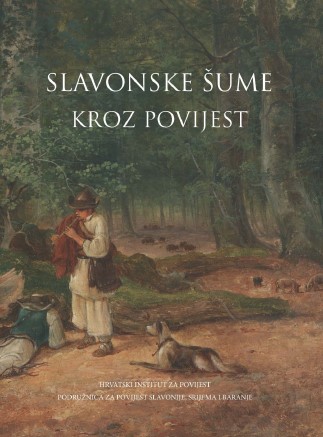
Keywords: forests of the Kingdom of Slavonia and Syrmia; Habsburg Monarchy; 18th century; Friedrich Wilhelm von Taube; Franz Stefan Engel;
From the earliest times forests represented great wealth in the territory of Croatia, Slavonia and Syrmia. In the modern era, during the Habsburg Monarchy and its administration, forests were a public good, i.e. in state ownership, to a large degree owned by the Court Chamber, the County/Županija or the Military Frontier. With a series of statutes, concerning land and landed property, mainly in the mid-18th century, the Habsburg Monarchy organized this area which consisted, among other things, of the forests mentioned in some of the articles. The forests of these areas (Slavonia and Syrmia) were also described by the Austrian subjects Friedrich Wilhelm von Taube and Franz Stefan Engel, who, as well as giving interesting descriptions of forest properties also focused their observations on the organization and management of forests, on regulations concerning logging bans and on general behaviour in forests. The descriptions of these two authors in their works that were both entitled Opis Kraljevine Slavonije i Vojvodstva Srema constitute very good historical and geographical sources for the understanding of the situation in the territory of Slavonia and Syrmia in the second half of the 18th century.
More...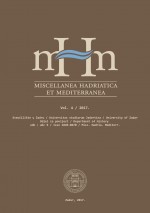
Keywords: canonical visitations; Syrmia; 18th century and the first half of the 19th century; religious history; everyday life history; Catholics;
Based on the data from canonical visitations to the dioceses in the territory of Syrmia in the 18th century and the first half of the 19th century, this paper analyses the determinants of the religious life of Catholics with a view to describing the basic characteristics of everyday religious life. The analysis and interpretation focus on determining the degree of acceptance of church regulations concerning cult and service issues, on religious practice, forms of popular piety, believers’ morality and behaviour, as well as religious disciplining and conformism. It determines the relation between the Catholic and other religious communities, particularly in the context of religious identity building. The paper also estimates the value of canonical visitations as a source for the history of everyday religious life.
More...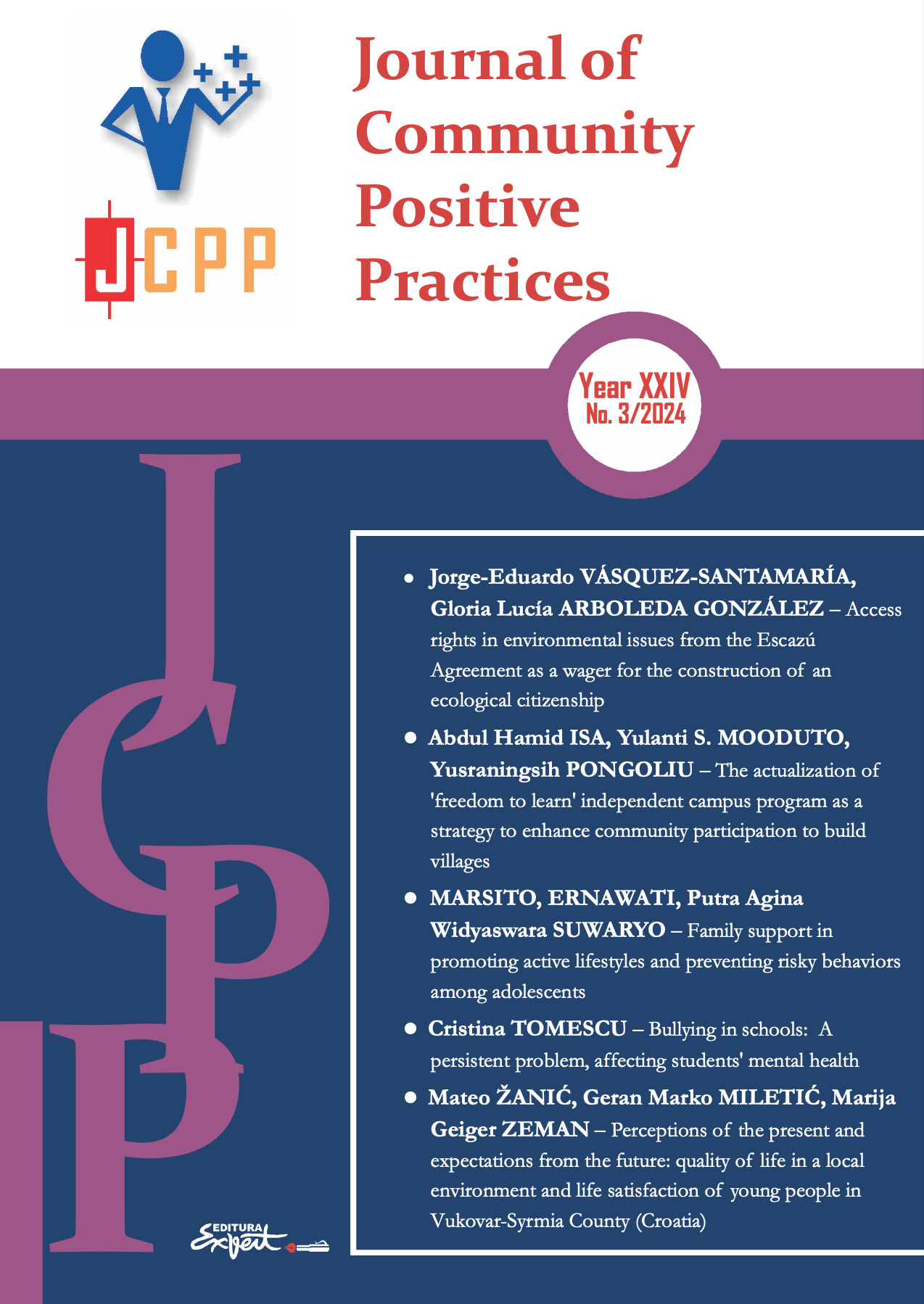
Keywords: quality of life; local community; youth; life satisfaction; expectations from the future;
In recent decades, the quality of life in the local environment has become a key issue in research focused on neighborhoods, cities, and smaller regions. The quality-of-life concept is used to determine positive and negative aspects of life in the local community, which makes it a complex and multidimensional concept. Having that in mind, this paper tries to evaluate the quality of life based on dimensions related to the socio-material aspects of life in a settlement but also to the social opportunities important for young people's transition to adulthood and planning their future. This paper is based on the data collected from a survey of third and fourth grade students of high schools in Vukovar-Syrmia County, on the eastern border of the Republic of Croatia, conducted in 2019. The goal was to answer the following research questions: 1) to what degree do certain dimensions of life quality impact general satisfaction of young people with their lives, 2) how relevant are certain assessments of the life quality dimensions for understanding the future of the local community. Since both individual lives and the lives of local communities are rooted in the temporal dimension, the quality of life research enables us to find the link between the present state and the perception of the future. The results of the research not only contribute to a better understanding of local living conditions on attitudes and satisfaction of young people
More...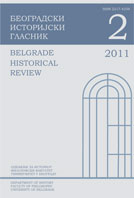
Keywords: Catholic church; vicar of Syrmia; Belgrade bishopric; ecclesiastical organization; Vienna court; Congregation for the Propagation of the Faith
The story of Luka Natalis, the vicar of Syrmia and the Belgrade bishop, up to a great extent depicts the position and fate of the catholic clergy all over the Syrmian territory in the period from the outburst of The Vienna War in 1683 to the signing of The Peace Treaty of Passarowitz in 1718. The war devastation followed by the populous migrations, terrible poverty, the occurrences of cyclic diseases of which the plague took the significant toll on human lives, the Hofkammer endeavors regarding the constitution of the Neoacquistica, which entailed settling down the economic and social circumstances so as to increase the state incomes, the protestant presence and especially the one of the orthodox Serbs’ who starting from 1695 had a firm ecclesiastic organization, therefore presenting just some of the elements the catholic church in Syrmia had to count on. Besides, neither Vienna nor Rome had a clear perception of how to ecclesiastically organize the gained territories. The efforts of Luka Natalis to bravely grapple with the mentioned issues led to him having a weather-beaten life during certain tumultuous events for over one quarter of a century, therefore becoming a symbol of one time and place.
More...Keywords: Migrations; Syrmia; Austru-Turkish war 1737–1739; Serbs
The author has taken into account the migrations of the Serbs from Serbia to Syrmia (Srem) during the Austro-Turkish war of 1737–1739 are concerned. In this war the border between the two empires has stabilized on the rivers Danube and Sava. Serbs have very much supported Austrian Imperial Christian army on its’ way through central and southern (Old) Serbia, but aft er the defeat of the imperial units, Serbs were constrained to migrate, just like in 1690. Th e largest number went with the units of Colonel Athanasius Rašković, who, besides the Serbs, had also led the Roman Catholic Albanian tribe of Clements. A part of the Serbian units (militia) has retreated under the command of Captain Vuk Isaković. He had later become one of the heroes of the Serbian literature. Besides them, aft er the fall of Belgrade in 1739 many traders and craftsmen, not only Serbs, but also Germans, Armenians, Aromanians had fled as well and settled in the urban parts of Srem, like for instance the towns of Karlovci, Mitrovica, Irig, Zemun, Ruma, etc. These refugees, especially traders and craft smen that were settled in the aforementioned urban areas of Syrmia have contributed very much to the economic growth and social power of the cities and market towns in Syrmia (Srem) by their wealth, but also experience and craftsmanship.
More...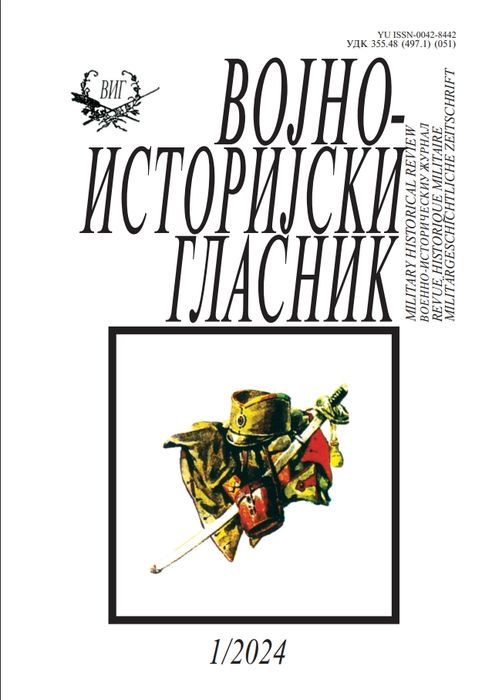
Keywords: Great War; Golubinci; Syrmia; Serbs; Orthodox; suffering
It is known that the Serbs in Syrmia were subject to the Austro-Hungarian army, that mobilization followed immediately after the declaration of war, and that at the same time, everything in Syrmia that had the prefix „Serbian” was declared hostile, and in the spirit of this policy, especially during the summer and in the fall of 1914, Serbs in Syrmia were ehposed to discrimination, torture and reprisals in various ways. This paper provides information about the events in Golubinci village from the summer and fall of 1914, whit a list of the names of civilians who were victims of the Austro-Hungarian army. List of active military personnel, who resisted the mobilizations, as well as those who joined the volunteer ranks of the Serbian Army, were also prepared. Then, there is a list of the natives of Golubinci who were thrown out of service as members of the Austro-Hungarian army during the war. Based on this list, it is possible to track the movement of Austro-Hungarian companies from the 70th Infantry and 28th Home Guard Regiments. The Great War in Syrmia left iffeparable losses and consequences, but, to this day, this is still an insufficiently treated topis. Therefore, this paper, whose focus is on the population of Golubinci, who are listed by name as actors of the war events, is prepared as a contribution to the study of the general picture of the Great War in Srem.
More...